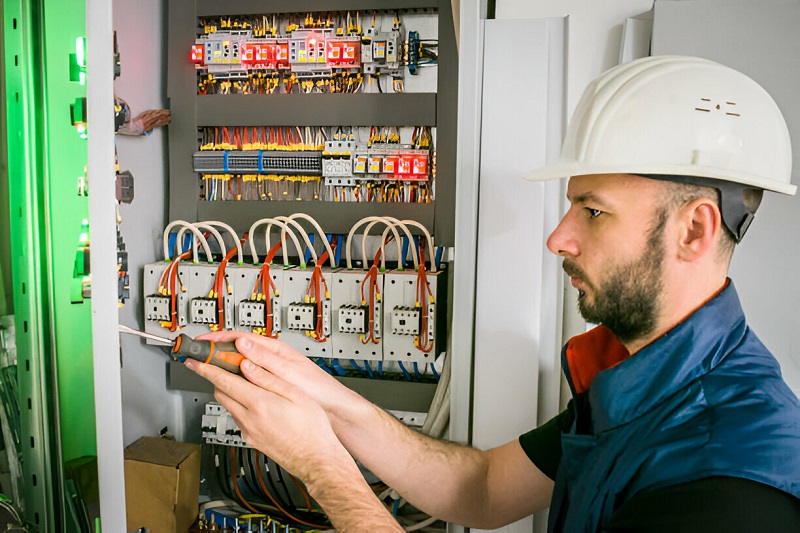Have you ever wondered what separates a professional electrician from an amateur? Is it just their knowledge and experience, or is there something more tangible that sets them apart? The answer lies in their toolkit. A well-equipped electrician is like a skilled artist with a complete set of brushes – prepared for any challenge that may arise. But what exactly should be in this toolkit? How do you ensure you have everything you need without lugging around unnecessary weight?
In the fast-paced world of electrical work, having the right tools at your fingertips can mean the difference between a job well done and a potential disaster. From the simplest residential repair to complex industrial installations, each task demands a specific set of tools. But with the ever-evolving technology in the electrical field, keeping up with the latest and most efficient tools can be a daunting task. How do you know which tools are essential and which are just nice to have?
This comprehensive guide aims to answer these questions and more. We’ll explore the must-have tools for every electrician, from the basics that form the foundation of any toolkit to the specialized equipment that can set you apart in your field. We’ll delve into the importance of safety equipment, the efficiency gains from the right power tools, and even touch on the emerging technologies that are shaping the future of electrical work. Whether you’re a seasoned professional looking to update your kit or a newcomer to the field trying to build your first set of tools, this article will provide valuable insights to help you assemble the ultimate electrician’s toolkit.
Safety First: Personal Protective Equipment (PPE)
When it comes to electrical work, safety should always be the top priority. Personal Protective Equipment (PPE) forms the first line of defense against potential hazards on the job. Every electrician’s toolkit should start with a comprehensive set of PPE to ensure personal safety and compliance with workplace regulations.
Insulated gloves are a crucial component of an electrician’s PPE. These gloves provide protection against electrical shocks and should be rated for the voltage levels you typically work with. It’s important to regularly inspect these gloves for any tears or wear and replace them as needed. Alongside gloves, safety glasses are essential to protect your eyes from flying debris, sparks, or accidental contact with live wires.
A hard hat is another indispensable piece of PPE, especially when working in construction sites or industrial settings. It protects against falling objects and potential head injuries. Non-conductive footwear is also crucial, providing insulation from the ground and reducing the risk of electrical shocks. For those working in environments with a risk of arc flash, appropriate arc flash protection gear is a must. This may include flame-resistant clothing, face shields, and specialized protective suits depending on the level of risk involved.

The Basics: Hand Tools Every Electrician Needs
The foundation of any electrician’s toolkit is a set of reliable hand tools. These are the instruments you’ll reach for most often, and their quality can significantly impact your efficiency and the quality of your work. Let’s explore the essential hand tools that should be in every electrician’s arsenal.
Screwdrivers are perhaps the most frequently used tools in an electrician’s kit. A good set should include both flathead and Phillips head screwdrivers in various sizes. Insulated screwdrivers are preferable for added safety. Pliers are another crucial tool, with lineman’s pliers, needle-nose pliers, and channel-lock pliers all serving different purposes. Lineman’s pliers are great for gripping, twisting, and cutting wires, while needle-nose pliers are perfect for working in tight spaces.
Wire strippers are indispensable for quickly and cleanly removing insulation from wires. A good pair of cable cutters will make short work of cutting through thick cables. Don’t forget a utility knife – it’s useful for a variety of tasks, from stripping large cables to opening packaging. These basic hand tools form the core of your toolkit and will be used on almost every job you tackle.
Measuring and Testing Equipment
Accurate measurement and testing are crucial in electrical work. Having the right equipment not only ensures the safety and functionality of your installations but also helps in diagnosing issues quickly and efficiently. Let’s explore the essential measuring and testing tools that should be in every electrician’s toolkit.
A multimeter is perhaps the most versatile and important testing tool for an electrician. It can measure voltage, current, and resistance, making it indispensable for troubleshooting and verifying circuits. A good quality digital multimeter with both AC and DC capabilities is a worthwhile investment. Alongside this, a non-contact voltage tester is a quick and safe way to check if a circuit is live without making direct contact.
A circuit breaker finder is another valuable tool, especially when working in existing buildings where circuit labeling may be unclear or incorrect. It helps you quickly identify which breaker controls a specific outlet or fixture. For more specialized measurements, a clamp meter is useful for measuring current without breaking the circuit. Lastly, a continuity tester is essential for checking if a circuit is complete and identifying breaks in wires or components.
Power Tools for Efficiency
While hand tools form the backbone of an electrician’s toolkit, power tools can significantly increase efficiency and make challenging tasks much easier. These tools can save time and energy, especially on larger projects or when working with tough materials. Let’s look at some of the most useful power tools for electricians.
A cordless drill is arguably the most versatile power tool an electrician can own. It’s useful for drilling holes, driving screws, and even mixing compounds when fitted with the right attachment. Look for a drill with variable speed settings and a hammer function for versatility. A reciprocating saw, often called a

